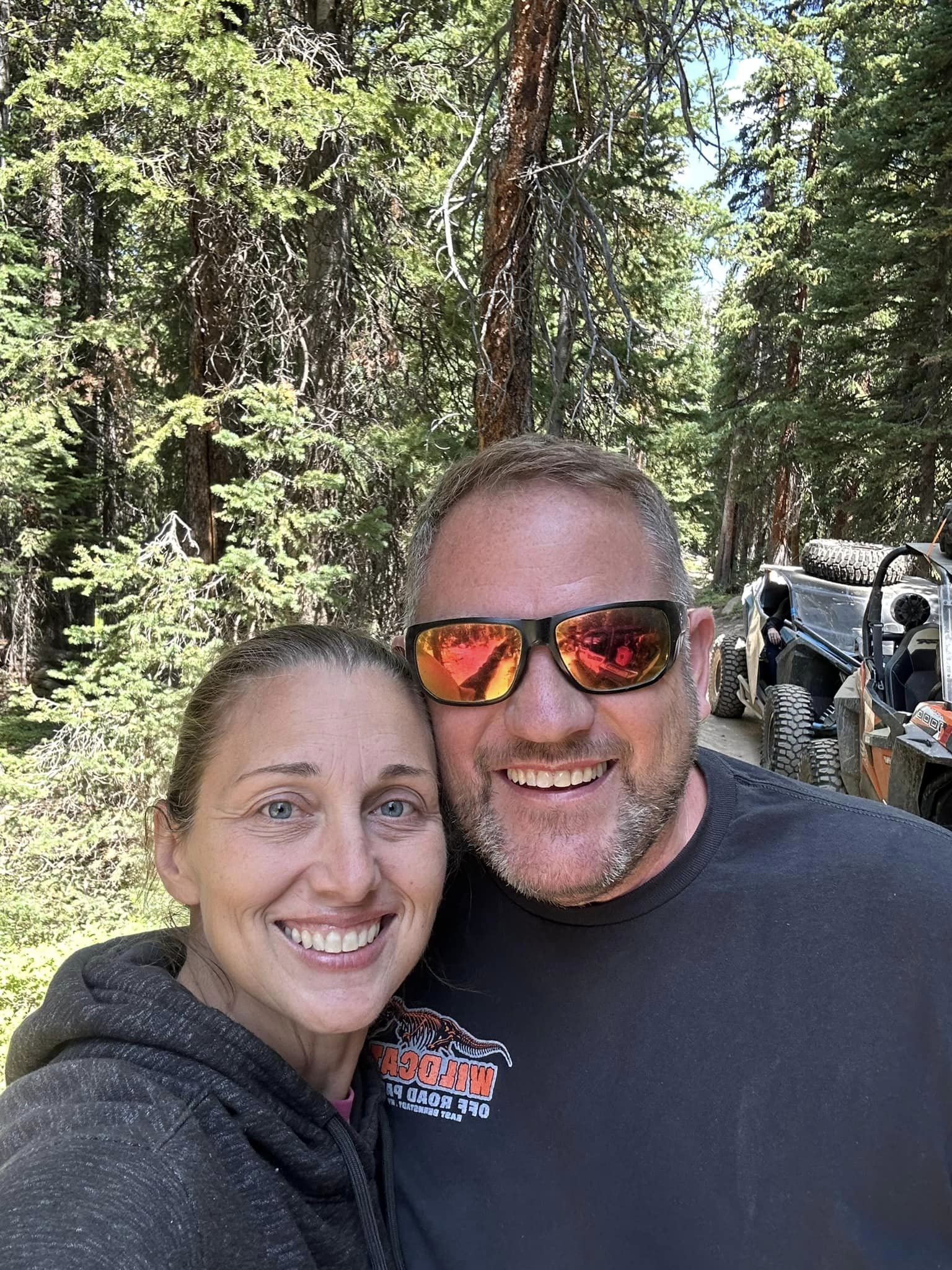Nothing compares to the flavor of meat smoked in a charcoal smoker like Reverse flow smoker or Offset smoker.
The unique smokiness taken on by the meat can be mixed and matched with several different kinds of fruitwood and hardwood to develop a more nuanced, personalized flavor profile that is otherwise impossible to develop within a pellet smoker or an electric smoker.
This is the exact reason why pit masters dearly value charcoal smokers, which are available in all sizes and shapes, with each design offering its disadvantages and advantages. The focus of today’s article will be to consider reverse flow smoker Vs. Offset smoker, and to determine which one is the best. Though these two designs may look similar, they are not the same!
Reverse Flow Smoker Vs. Offset Smoker
At first glance at the reverse flow and the offset smoker, you will find them to look almost identical, with no possible differences in their design. This is because the two smokers have a common barrel-style laid sidewards and cut in half to form a cooking chamber.
The side of the barrel is bolted or welded with a small cylinder with a door known as the firebox. Till this point, the design for both smokers is the same, but what differs is that the upright exhaust vent in the reverse flow smoker is on the same side as where the cooking chamber is.
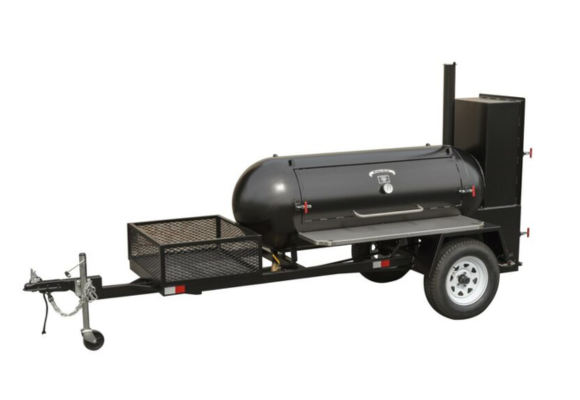
However, in an offset smoker, the vent is not on the same side as the main cooking chamber and is located further away from the firebox and on the other side. In the reverse flow smoker, the heat and smoke are first forced to undergo the tuning plates from where it reaches the meat and is then excelled outside through the chimney.
Contrary to the offset smoker, the heat will directly travel from the firebox to the chimney, creating cold spots in the pit.
Characteristics Of Reverse Flow Smokers
From left to right, in a reverse flow smoker, your food will be cooked evenly at a regulated temperature, and your site will require minimal intervention during smoking.
Instead of being smoked from the top down like in a traditional smoker, the food will be cooked from the bottom up through the baffle plate horizontally installed in the cooking chamber, running through the firebox, and ending across the opposing end of the smoker.
The name reverse flow of the smoker defines the circulation of the heat, which goes up from the end of the firebox, taking a 180-degree rotation before being released into the surroundings.
Characteristics Of Offset Smokers
Offset smokers’ certain characteristics are the same as a reverse flow, but what stands to be distinguished is the smoking circulation, which does not have to wait to travel till the horizontal baffle’s end and travels up before being released.
Rather, the airflow is controlled through the tuning of short plates 10 inches long and horizontally widespread under the main cooking grate in the cooking chamber. The pit master has to tune the setting of these plates to regulate the temperature zones of the chamber.
Maintaining the offset smoker’s temperature by tuning the plates is more complicated and challenging than the reverse smoker’s temperature. Though every pit master has their own way of doing this, people usually either close off the smokestack and alter the air inlet on the firebox or keep the chamber’s door a little open during cooking to release the air.
Prominent Differences
As the build of the reverse flow smoker Vs. Offset smoker is different, and so is how their temperature is controlled, the smoke flavor outcome, temperature zones, and heating outcome.
Temperature Control
The main difference between an offset smoker and a reverse flow smoker is how the temperature is controlled. Both these smokers have varying ways of heat retention and ignition, whereby the goal is similar- to keep the smoking temperature as stable as possible so the food can be smoked evenly.

The smoker that is relatively easy to set the temperature for is the reverse flow smoker. After a good fire start up, the only temperature modification required is when closing and opening the intake and outtake valves. It’s like “set and forget.”
In comparison, the offset smoker is more demanding and requires attention as you will have to adjust the stack, reduce the fire, and alter the flow of smoke during smoking. Adjusting the stack dumper is the most important thing to do for smoke and heat distribution.
Smoke Flavor
When distinguishing between the smoke flavors, most people fail to notice the difference in flavor during their reviews. However, if you are a food expert, you will notice that the meat cooked in a reverse flow smoker has a peculiar taste, lacking in meat cooked on an offset smoker.
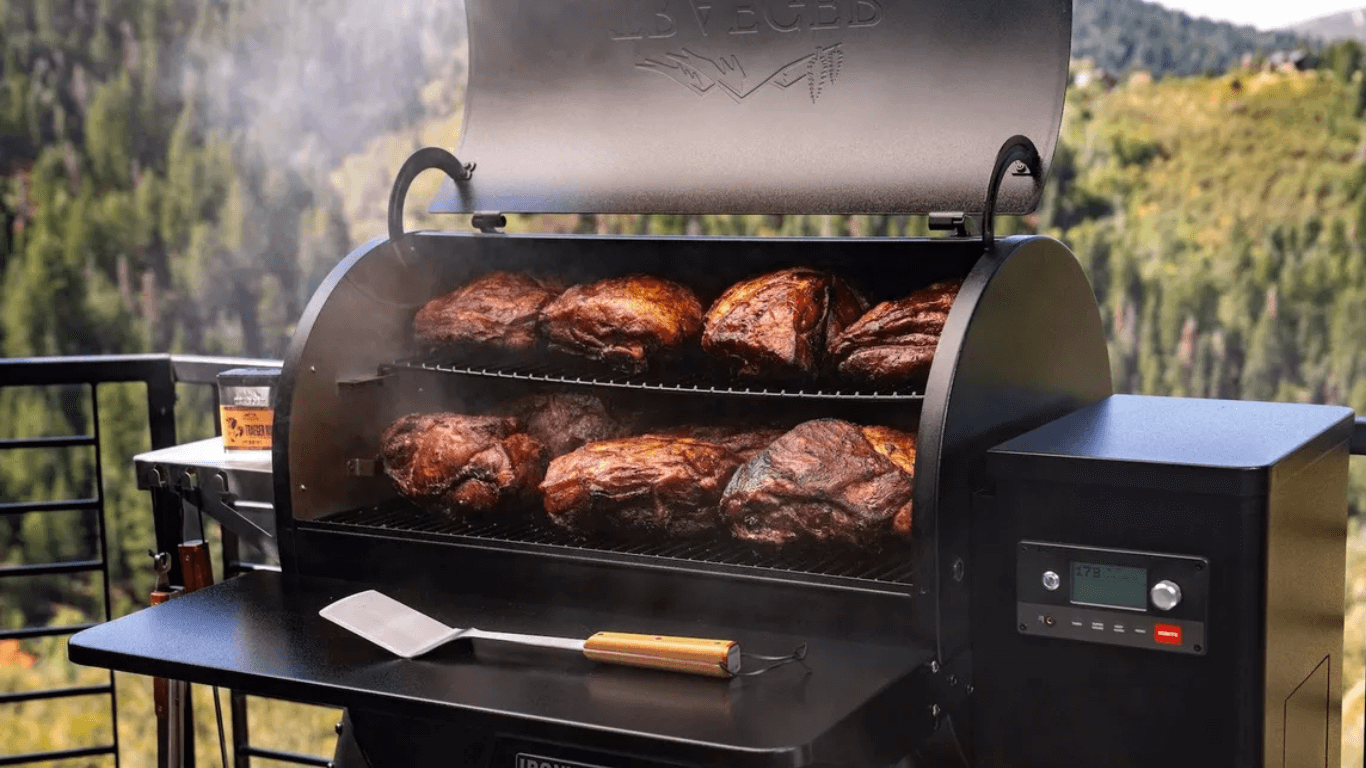
Most of the taste inherited by the meat cooked on a reverse flow smoker is through the flavorful smoke imparted from the fruit or hardwood. This quality of the smoky meat is attributed precisely to the design of the smoker, which lets the smoke flow thoroughly inside the cooking chamber, which, as a consequence, enhances and maximizes the flavor delivered to the meat.
Time For Heating
Heating time of the reverse flow smoker Vs. Offset smoker is significantly different. Both take a varying span to heat, whereas a reverse flow smoker will need more time before it reaches the ideal internal temperature. This happens because of the rise in heat and the heat circulation supported by the smoker’s design.
Though the time taken for the smoker to heat is longer, the heat in the smoker as an outcome is also retained for an expansive span compared to your offset smoker, which is manufactured only for cooking through slow, low, and indirect heat cooking.
Zones For Temperature
Evidently, reverse flow smoker Vs. Offset smokers have unique mechanisms for heat and smoke distributions in their chambers, which complement their designs. The strongest advantage, which gives a reverse flow smoker its competitive edge, is that it can maintain a consistent cooking temperature for a more uniform cooking environment.
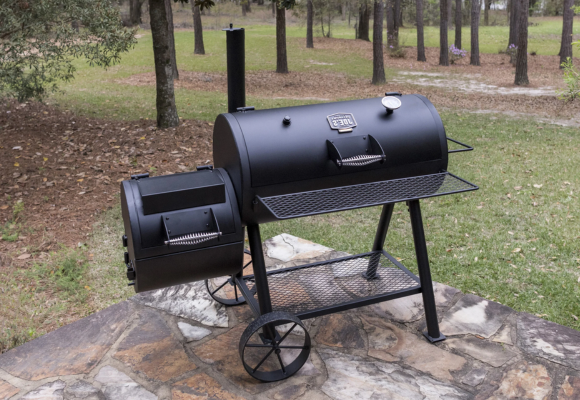
The reverse flow smoker’s heat radiates from the cooking chamber via the baffle plates placed under the cooking surface. It simultaneously creates a constant heat-regulated temperature in the cooking chamber, ensuring the meat is cooked appropriately.
But when considering an offset smoker and temperature zones, it has both hot and cool air zones, which creates a patchwork temperature effect, thus giving you a variety in cooking where you can choose between cooking in a hot or a cool zone.
Thicker cuts of meat can be cooked in the heat zones, whereas delicate meat cuts can be placed in the dedicated cooler zones for an effective smoking outcome. Most experienced grillers love the freedom of cool and hot temperature zones in the offset smoker because it is challenging as more skill is required to grill and smoke.
However, at the end of the day the decision whether to opt for a reverse flow smoker Vs. Offset smoking is largely determined by the preference you hold for smoking as a pit master.
Which One Is Better?
Again, we can not declare on your behalf whether the reverse flow smoker is better or the offset smoker because this is something that you have to decide on your own. The determinants that can assist you in concluding are first analyzing your preferences and then evaluating how compatible you are with the design of both these smokers and how conveniently you can operate them.
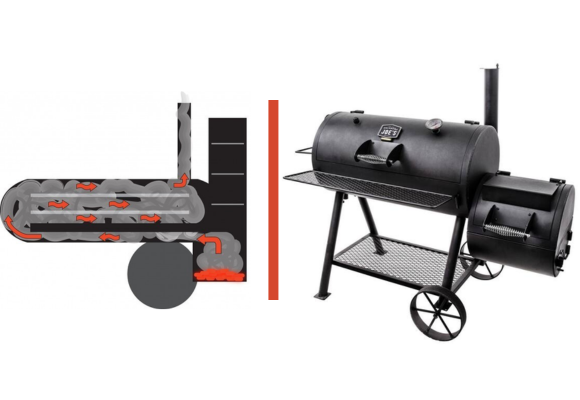
Working with two temperature zones is not everyone’s piece of cake, and is something that has to be mastered and only comes naturally to an individual after a lot of practice and conscious effort.
Keep in mind that although the designs look similar, it does not indicate that the smokers will work similarly as well because subtle differences exist that greatly impact the final results.
There are a few key techniques and elements for utilizing an offset smoker, without which you will not be able to achieve good results. A prominent example is the maintenance, stabilization, and control of the temperature. Part of the design of an offset smoker mandates the cook to intervene to control the temperature while the smoker regulates the other half.
You must learn the operation tricks for both smokers, which will need patience, practice, and time. You cannot immediately get the hang of the vent openings and their controls when to add charcoal, how much charcoal is to be added, and what the effects of using wood and charcoal are in combination.
Attaining desirable results comes accompanied by trial and error, and these skills must be obtained regardless of the smoker you choose out of reverse flow smoker or Offset smoker. Once the basics are learned, the learning can be adjusted to apply to either of the smokers.
When To Use Which Smoker?
The two similar designs can be used interchangeably and for cooking the same foods, but there are a few distinctions that can prove to be of value and help to you.
- When and if you are smoking a food item that needs a lot of water to be cooked in, otherwise, in a humid environment, use an offset smoker because, in it, you can easily include water pan during the smoking process.
- For adding maximum smoke flavors to food, use a reverse flow smoker. This smoker works well for cold-smoking procedures, such as smoking salmon. Also, the smoker will slowly cook these foods at a light heat.
- To acquire consistent cooking with a rather stable temperature, your go-to option should be a reverse-flow smoker since the heat is more dispersed and distributed in it than in the offset smoker, which has higher temperatures on the racks near the firebox.
Deciding Factors Before Buying
Basically, offset smokers are more easily available and also come at a lower price compared to reverse flow smokers. Although most of their features are different, they might look the same when you see them.
Manufacture Design
Nowadays, companies simply manufacture smokers into parts, package them into boxes, and supply them to buyers and the purchaser then assemble them according to the instructions provided by the company. In most designs, there is no good connection, and seals are often missing between the body, firebox, and even the chamber door. The unavailability of a good connection between them results in seal leaks at these points. Therefore, before purchasing, it’s important to confirm that the product provides fireproof seals for these critical areas that I have mentioned. (This factor must check on both smokers)
You must consider this if you are deciding on a reverse flow smoker, as most of its designs have a welded baffle plate. This can make it difficult to clean, and if not cleaned properly, it can lead to decay and rust on your smoker. Therefore, I personally choose and recommend selecting designs that allow the baffle plate to be removed from the smoker, as this makes it easier to clean.
Metal Body
The durability of a smoker is often measured by the thickness of the metal used or by the weight of the entire smoker. A heavier smoker typically indicates strength, which is due to the thickness of the metal body and the cooking chamber door. A thicker cooking chamber retains heat better, creating a more suitable cooking environment for the food. However, choosing a smoker with heavier metal might be more costly, but it could offer better performance with maximum life.
Conclusion
Now that you know that despite the seemingly “Same” smokers- reverse flow smoker Vs. Offset smokers, are different. John almost liked the idea of a reverse flow smoker, but is currently using a regular offset smoker. You can use this to make a wiser choice for a smoker to use at home, restaurant, or elsewhere. Remember, the way the heat is circulated and the arising cooking outcomes from both these smokers vary, so per that and your demands, finalize on reverse flow smoker Vs. Offset smoker.
Frequently Asked Questions
What is the difference between an offset smoker and a regular smoker?
An offset smoker will accommodate a much larger amount of meat than a regular smoker and also offers different temperature zones.
What is a reverse air flow smoker?
A reverse air flow smoker uses a baffle plate for even heat distribution.
Which is better, offset smoker or pellet smoker?
Offset smokers are better because pellet smokers often burn meat, and the meat is not tender and devoid of juices.
Which produces even heat, reverse flow or offset smoker?
A reverse flow smoker produces a more consistent and stable heat and temperature than an offset smoker.
